Mission to Peru
Remembering the legacy of Fr. Bill Schultz and Scarboro’s participation with many other lay and religious in accompanying communities struggling for a better life
By Fr. Frank Hegel. S.F.M.
January/February 2013
Return to Table of Contents
Print Article
On a rock-filled hillside on the outskirts of Lima, Peru, lies the tomb of Scarboro missionary Fr. William Schultz. The nondescript burial marker is easily missed if one does not know exactly where to look. However the people of the neighbourhood know the location and will gladly point it out to visitors. After all, they requested that Fr. Schultz be buried there among their own family members.
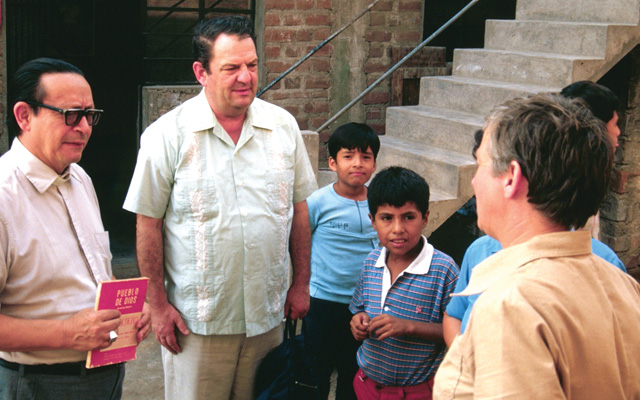 Fr. Bill, centre, served the poorest of the poor in El Progreso, a community on the outskirts of Lima, Peru, from 1980 until his death in 1986. He is buried there in the cemetery of Carabayllo.
Fr. Bill, centre, served the poorest of the poor in El Progreso, a community on the outskirts of Lima, Peru, from 1980 until his death in 1986. He is buried there in the cemetery of Carabayllo.
Fr. Bill served with his fellow Scarboro missioners at the parish of Christ, Light of the World on the Tupac Amaru roadway, connecting the core of Lima with the impoverished shantytowns (pueblos jovenes) that sprung up overnight on the outskirts of the city. He is buried in the cemetery of Carabayllo, one of these impoverished communities, his grave still maintained some 27 years after his death in 1986. People there strive to ensure that when they die their tomb is placed near his. Why is this? I can attribute it to nothing less than the legacy left by Fr. Bill that remains to this day.
A true pioneer, having served in mission in Japan, he founded a Japanese lay missionary program through which Catholics from Japan could pursue mission activity. He began in Peru with Michiko Ohashi, Japan’s first lay missioner to Peru, who continues working there to this day.
Fr. Bill accompanied the poor in the era of Sendero Luminoso (Shining Path), the vicious rebel group that terrorized the country for more than a decade during the 1980s. This group devastated the crops of poor peasants, threatened the municipal governments with death, and put on public trials of local officials followed by instant sentencing and execution. To have lived among the people during this period when he could have returned to Canada is part of Fr. Bill’s legacy.
La Victoria
Scarboro’s second Peruvian mission was established in 1980 in the parish of St. Joseph the Worker, La Victoria, Chiclayo, on the northern coastal desert. We were there at the invitation of the Diocese of Chiclayo, accompanied by a team consisting of diocesan priests and members of the Sisters of Charity from the Archdiocese of Halifax, Nova Scotia. Archbishop James Hayes, then Archbishop of Halifax, had participated in the Second Vatican Council and sent the first team of diocesan priests to Chiclayo in 1968 in response to Pope John XXIII’s call to mission in Latin America.
People strive to ensure that when they die their tomb is placed near his. Why is this? I can attribute it to nothing less than the legacy left by Fr. Bill.
While this area of the country was not as severely affected by the direct presence of Sendero Luminoso, pressures from this group and its rival, the Tupac Amaru Revolutionary Movement, began to be felt in the early 1990s. At that time, according to the UN, Peru held the highest record in the Americas for disappearances. Each successive pastor in the parish led the people in proclaiming the Good News that violence was not the response to violence.
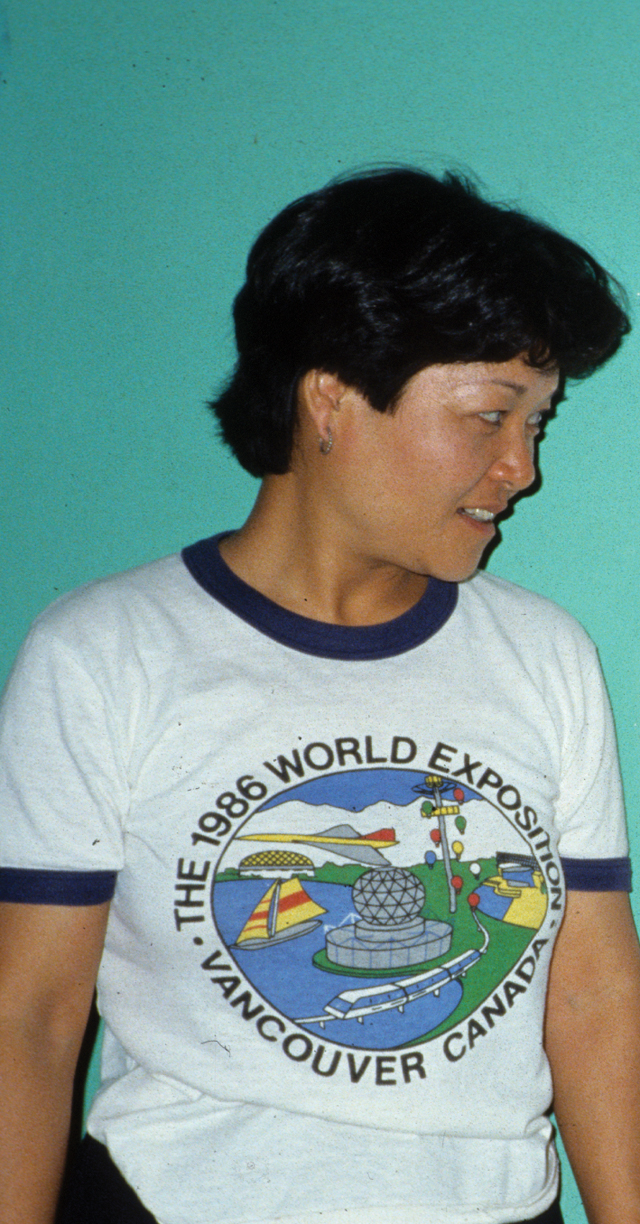 Michiko Ohashi, Japan’s first lay missioner to Peru, stands beside a poster of Fr. Bill Schultz. El Progreso, Peru. First missioned to Japan where he served more than 30 years, Fr. Bill founded a Japanese lay missionary program through which Catholics from Japan could serve in mission.
Michiko Ohashi, Japan’s first lay missioner to Peru, stands beside a poster of Fr. Bill Schultz. El Progreso, Peru. First missioned to Japan where he served more than 30 years, Fr. Bill founded a Japanese lay missionary program through which Catholics from Japan could serve in mission.
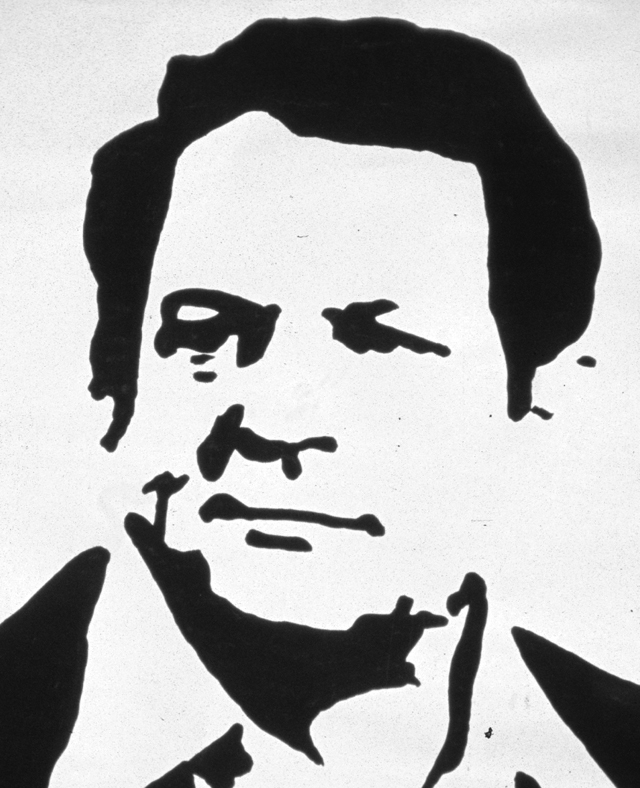
What does it mean to live among the poor and destitute? It means to live in such a way that one takes on the mindset of the poor. Without the luxury of being able to plan for tomorrow, the people of Chiclayo made the most of each day as it came. Their philosophy of life could be characterized in the passage, “Do not worry about tomorrow, for tomorrow will bring worries of its own. Today’s trouble is enough for today (Matthew 6:34). They trusted in Divine providence—a trust born of necessity, not of choice. “God is good” and “God is great” were phrases we heard time and again. Somehow they managed to scrape together enough money for busfare, without which they had to walk long distances. Somehow they managed to put food on the table even though it might be just a bun with a plate of rice.
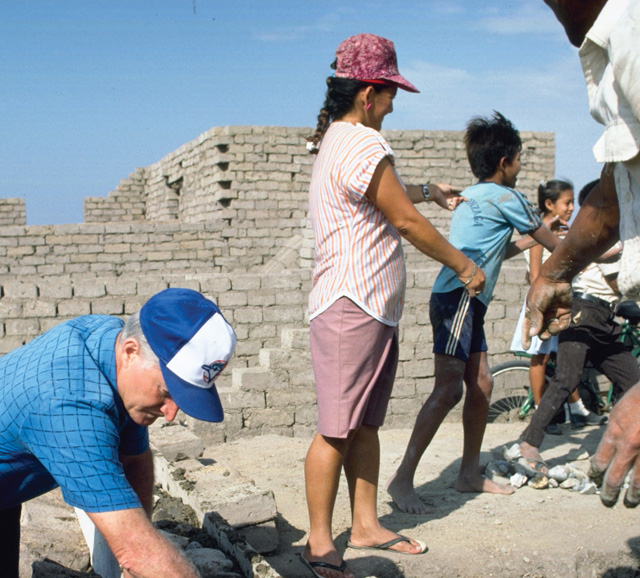 Lay missioner Gerry Heffernan organized a housing project and worked alongside the people to build almost 200 homes.
Lay missioner Gerry Heffernan organized a housing project and worked alongside the people to build almost 200 homes.
In 1993, Scarboro’s mission in Peru came to an end. We had lived and interacted with the people of Chiclayo for many years, opening ourselves to friendship and community. We had been privileged to share in the people’s daily lives and had received a great spiritual richness in the sharing between cultures. We would miss their joy, love and courage. Despite living in conditions of extreme poverty and death, they continued to proclaim and celebrate the God of Life and Goodness.
They had once understood the Church as identified with the rich and powerful, but their experience became that of a Church of the poor. The number of people from the various communities participating actively in their parish increased. They learned to read the Bible. They desired to learn more about their faith and to live their faith within the community. They met together to pray, reflect and organize to better their lives. From this came a greater valuing of their own dignity and culture, and the importance of justice, truth, life and dialogue. They desired to learn about the wider Church by studying the Catholic social teachings of the bishops of Medellin, Colombia; of Puebla, Mexico; and of Santo Domingo, Dominican Republic; as well as other Church documents. They learned to value each other even though their community was made up of people from different parts of the country with different cultures and traditions. They learned to promote community through such actions as the “common pots” and the “work bees,” coming together to help each other and to better their lives.
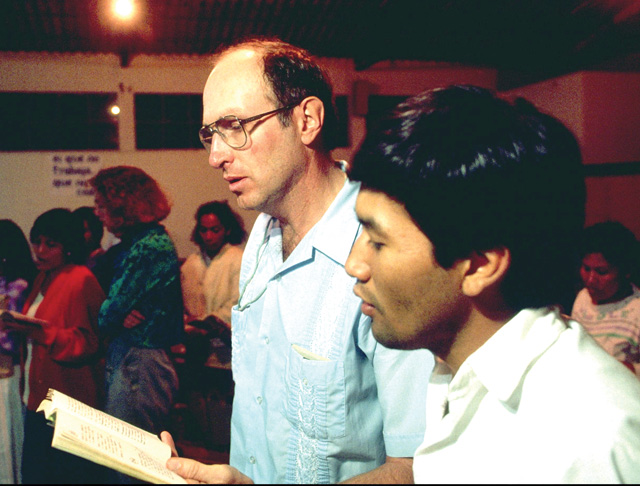 Fr. Frank Hegel at a small faith gathering where the people prayed, reflected and organized to better their lives.
Fr. Frank Hegel at a small faith gathering where the people prayed, reflected and organized to better their lives.
Yes, accompanying people as they struggled to change their lives was probably the most important aspect of our legacy in Peru. Being the last Scarboro missioner to leave the country, I think I could say that “we have done only what we ought to have done” (Luke 17:10).
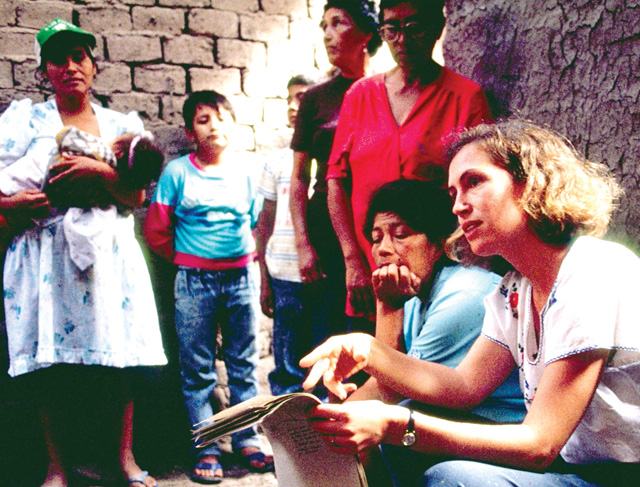 Lay missioner Armella Sonntag worked with CEPAS, a popular education and social action group through which “the illiterate read, the marginalized organize, and women are empowered.”
Lay missioner Armella Sonntag worked with CEPAS, a popular education and social action group through which “the illiterate read, the marginalized organize, and women are empowered.”
Return to Table of Contents
Print Article